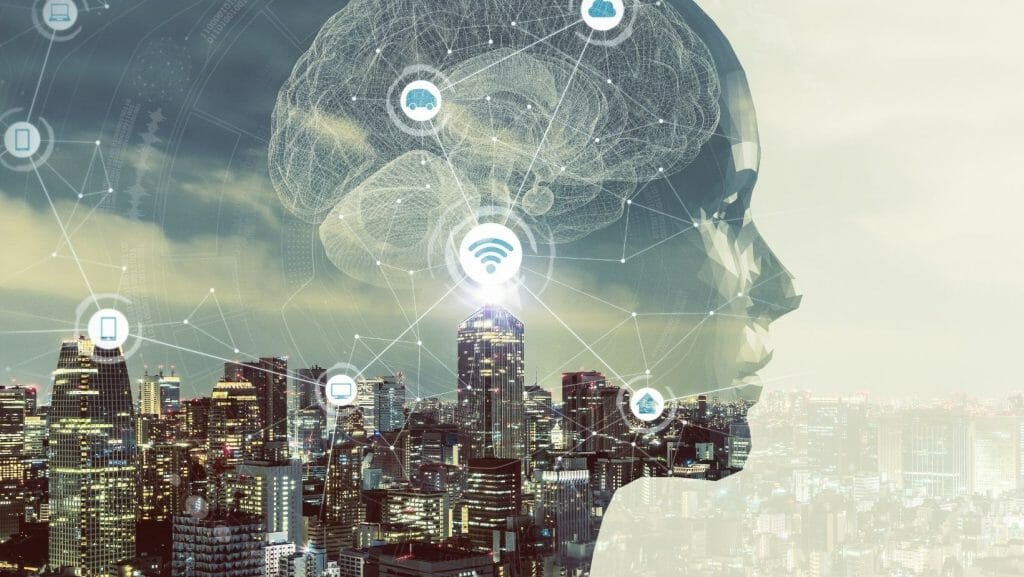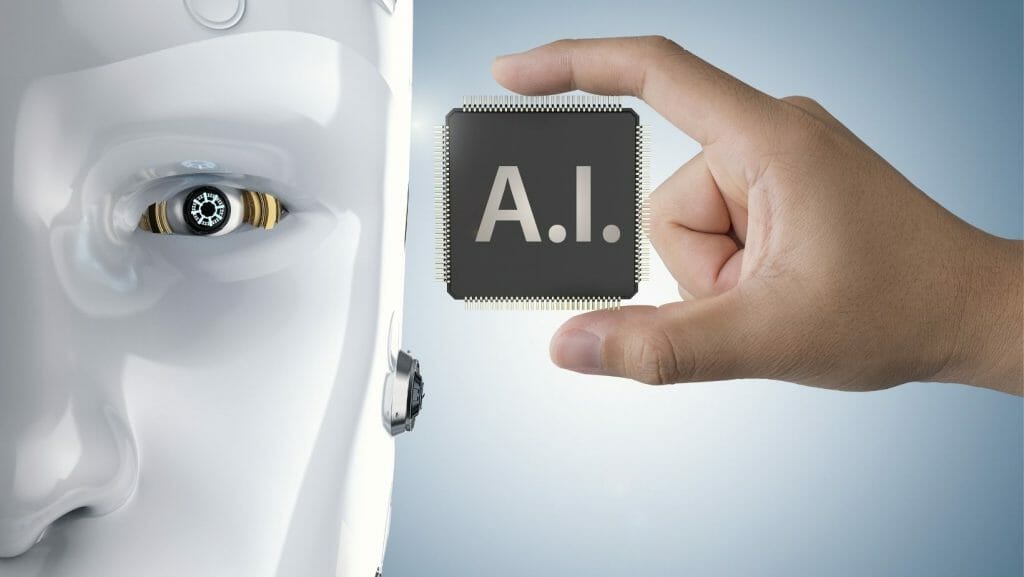Artificial Intelligence (AI) is all the rage these days, particularly within the tech sector, but it’s also a topic that is of interest to many in other industries too.
In fact, AI is frequently discussed in corporate boardrooms, and it’s not uncommon for a leader to take the opportunity to set out their vision for the future. So, what does the future hold for employees in the workplace, and how might artificial intelligence shape all our interactions? What’s the current state of the art? And when will the future arrive?
Artificial intelligence is transforming the workplace by providing a more intelligent way to support employees and teams, as well as improve customer service. The term was coined by science-fiction writer, Marvin Minsky, in 1950. AI (artificial intelligence) is the ability of a machine to execute tasks that require human intelligence. This idea of a digitally-enhanced future where robots and computers are allowed to do the work of humans has been a staple of science fiction for a long time.
But now it is happening before our eyes. According to a recent report published by Gartner, by 2020, more than 30% of people will be employed in roles that were once the preserve of humans. This means that besides hiring more people to fill jobs that will be replaced by robots, companies will need to find solutions to keep their staff engaged, develop new technologies to keep pace with the changes, and create a future-proof business model.

The Digital Customer Experience
Creating and delivering an exceptional digital customer experience is a top priority for any business. Customer experience has received a lot of attention in recent years, but companies have finally realized that in order to provide a world-class customer experience, it is important to improve the employee experience first. It’s safe to say that employee experience has become the new customer experience, and it’s time for companies to rethink and redefine their digital customer experience strategies. The trends in digital customer service have changed significantly in recent years due to increasing digitization and situations such as remote working. As a result, employees’ expectations have changed and they are looking for simple ways to help them do their jobs better and feel more engaged at work.
Best practices for digital customers start with a mindset shift. Gone are the days when working in an organization was considered a necessity – the need to have a job. Successful companies are moving away from this mindset and focusing on creating jobs where people not only have to work, but want to work. Employees who have control over when, where and how they can work are happier, more innovative and more productive. Digital customer experience management plays an important role in aligning the employee experience in an organization, and not just in terms of workplace and culture. This requires taking into account all aspects that span the entire organizational journey of a candidate, from candidate to employee to ex-employee.
Linking customer and employee experience
Here’s what companies need to do to close the gap between customer experience and employee experience:
- Evaluate the success factors of your organization
- Analyze existing procedures to improve employee satisfaction.
- Determine the relationship between these procedures and your business objectives.
The experience is changing as technology shifts from digital to artificial intelligence-based technology. In terms of employee experience, companies have entered an era where AI is no longer just a help desk. This will be crucial in promoting employee engagement activities across the organisation.

Making employees happy with artificial intelligence
Before we look at how companies can make their employees happy with artificial intelligence, let’s understand what makes an employee unhappy? The most common answer to this question is the monotony of the work and the need to search through different systems for the right information, which makes even a simple task tedious. When we consider how the latest trends in artificial intelligence can work with humans to create a team of efficient workers, the power of AI can go far beyond automating simple, repetitive actions. Let’s take a look at the current trends in artificial intelligence and how they can make a difference in the workplace:
Recruitment
One of the most popular areas of artificial intelligence in business is the use of AI in hiring. Job seekers will remember the experience you provide on their first day at work. The HR team can use AI to take over some routine manual processes, such as. B. send documents, make recruitment appointments and answer basic questions during the recruitment process. Thanks to this mechanism, New employees can go through a smooth adaptation process. This also ensures that they do not experience delays in the registration process and that their questions are answered quickly.
Overqualification of workers
Business learning is undergoing a revolution through content based on virtual and augmented reality. Employees can also determine what they learn, when they learn, and how they learn by choosing the format, modules, and speed of learning, while adhering to the business strategy – and having fun in the process.
Goodbye monotonous tasks
When we talk about artificial intelligence trends, we can’t help but mention AI, which eases your schedule and helps you focus on strategic projects – all by eliminating monotonous and time-consuming tasks. This significantly improves the experience of each employee.
Supervision of employees
By examining how the business operates and identifying opportunities to streamline processes and remove bottlenecks, a company can improve employee job satisfaction and productivity. Using sentiment analysis to identify employee-related artifacts can help organizations proactively identify disgruntled employees. The organization can then take constructive action to promote employee satisfaction and retention. By providing cognitive support, data-driven intelligence solutions and making sure employees feel heard, AI can help develop workforce management systems.
Artificial intelligence-based tools are changing the game because they can digitally transform the employee experience. While there is a clear link between employee experience and customer experience, it is common knowledge that company culture cannot change overnight. However, HR leaders who shift their focus from systems to truly understanding the needs of their employees can begin to develop enhancements that not only improve the digital customer experience but also contribute to incredible business results.
It’s been 10 years since the iPhone was first introduced to the public. In that time, companies from around the world have released hundreds of phones that attempt to emulate the iPhone’s success. Many of these smartphones have some sort of special feature to make using them easier, like an easy-to-access ‘back’ button. It’s hard to keep track of all these phones, though, so we’ve created our own list of the best iPhone alternatives. Read more about ai in the workplace statistics and let us know what you think.


